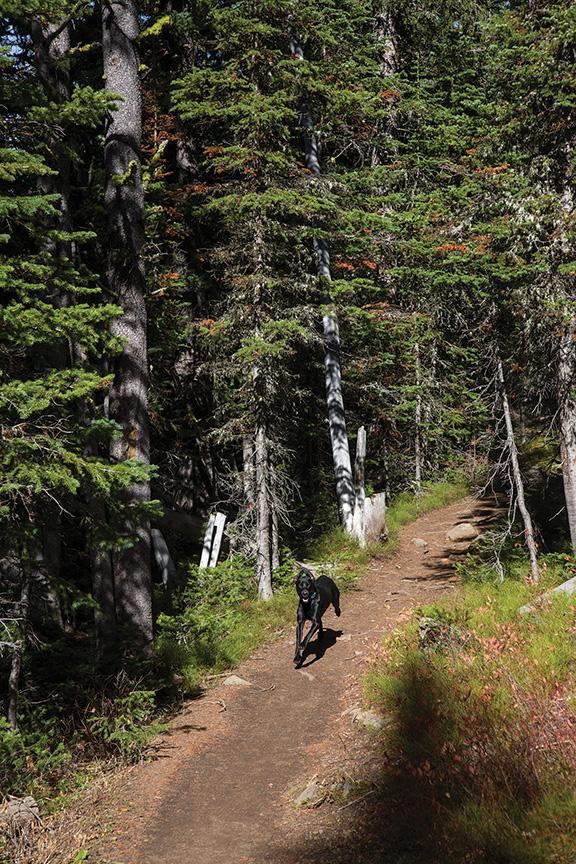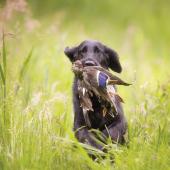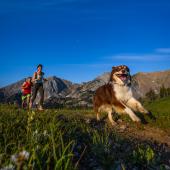Ask a Vet: Spring Edition
Pet questions for spring.
We all have questions about our pets, but few of us have expert answers. That’s why we asked a pro—here’s what longtime Bozeman-area vet Dr. Sid Gustafson had to say.
1. Should I be concerned about my dog getting into winterkill? Why?
Yes, you should be concerned because your dog is telling you that you have failed to fulfill her essential need for fresh raw meat and bones on a regular basis to maintain sound physical and behavioral health.
Dogs have long evolved to thrive on raw meat, as their quest for winterkill exemplifies. The musculoskeletal, digestive, metabolic, and behavioural health of your dog is dependent on a diet enhanced with safe raw meat and bones. Processed kibble is for human convenience rather than optimal dog health and cannot be relied upon alone to maintain musculoskeletal health or facilitate graceful aging. Raw meat and bones are especially important for young growing dogs, and aging dogs. Fulfill your dog’s innate and nutritionally-essential yearnings for fresh meat and bones on a regular basis. When the shedding becomes absent or minimal, you know you are feeding enough raw each day.
As to meat-deprived dogs dining on rotting winterkill, dogs can acquire ectoparasites such as lice from scavenging on game carcasses. Beware: ingesting tapeworm-encysted raw game meat can result in a tapeworm infection in both dog and man. The safest raw meat for your dog is USDA-inspected roasts and steaks—skip hamburger and chicken. Elk, deer, moose, and antelope meat is great, too.
2. How young is too young to start my pup trail running? To what length/distance should I limit my runs?
Dogs thrive on abundant daily locomotion. Start your pup on short safe walks after she has acclimated to her new life with you. Gradually increase the play and walks over time. Never exercise your growing dog more than she has been carefully acclimated to exercise. It is in measured increments that you condition yourself, and in careful measured increments in which you condition your growing puppy. No unaccustomed exercise, please—none. If the conditions change, adapt. Going ten miles on a firm trail does not acclimate your dog for ten miles in deep snow. Understand that differing conditions require different muscles. All increases in exercise should be carefully orchestrated and managed to encourage gradual conditioning. All healthy dogs require two or three hours of engaged daily activity to maintain optimal health.
3. Is heartworm something we need to worry about in Montana?
No, heartworm disease in not endemic around Bozeman and Big Sky. Mosquitoes are required to transmit the heartworm microfilaria picked up from an infected dog. After an infected dog has been bitten, the temperature must continuously remain above 65 degrees for seven days and nights before the mosquito becomes infective and can infect another dog. Since those warm continuous ambient temperature conditions do not exist in most of Gallatin County at any time of the year, heartworm transmission is scientifically unable to occur. Infected dogs are rare around Bozeman, always coming from elsewhere. Local native dogs are not being diagnosed with heartworms here. Monthly heartworm medications are not advised in Bozeman and Big Sky at this point in time, as the side-effects of these relentless lifetime drugs outweigh any prevention benefits. Twice-annual testing for heartworm disease is the recommended veterinary evidence-based method of prevention in these parts. This allows many dogs to live wholesome drug-free lives here, with subsequent graceful and healthy aging as a result.
Dr. Gustafson has practiced holistic veterinary medicine in Gallatin County since 1982.
Editor's note: when this article was published (Spring 2017), several Bozeman-area vets took exception to Dr. Gustafson's stance on heartworm. As always, check with your own vet before making any important decisions about your pet's health.













